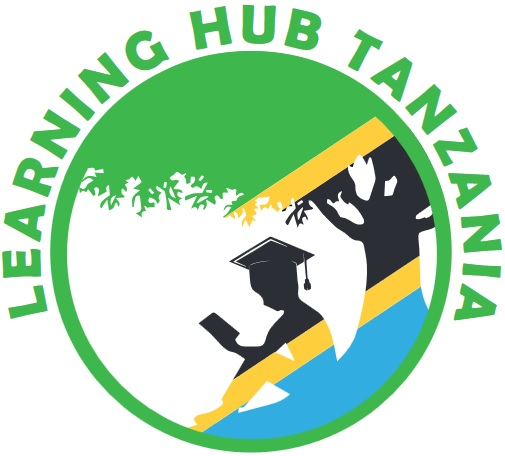

FORM ONE GEOGRAPHY EXAM SERIES 221
FORM ONE GEOGRAPHY EXAM SERIES 221
THE PRESIDENT’S OFFICE
REGIONAL ADMINISTRATION AND LOCAL GOVERNMENT
GEOGRAPHY FORM ONE TERMINAL EXAMINATION
CODE 012
TIME: 2:30 HOURS
INSTRUCTIONS.
- This paper consists of section A, B and C with the total number of ten(10) questions
- Answer all questions in each section
- Section A carries (15) marks, section B (70) marks and section C carries (15) marks
- All writing must be in blue/black ink except drawing which must be in pencil
- Cellular phones and any unauthorized materials are not allowed in the assessment room.
SECTION A (15 Marks)
Answer all questions in this section
1. For each of the items (i) – (x) choose the correct answer from among the given alternatives and write its letter beside the item number in the answer sheet provided
(i) Which of the following is NOT considered a major domain of the Earth's environment?
A. Lithosphere
B. Biosphere
C. Atmosphere
D. Cryosphere
(ii) The study of geography helps us understand:
A. The spatial distribution and relationship of physical and human features on Earth
B. The history of the solar system
C. The chemical composition of stars
D. The evolution of dinosaurs
(iii) The largest planet in our solar system is:
A. Saturn
B. Jupiter
C. Earth
D. Mars
(iv) What causes Earth to experience day and night?
A. Revolution around the Sun
B. Rotation on its axis
C. Movement of the Moon
D. Changes in the amount of solar energy
(v) Which is an example of a renewable energy source derived from the Sun?
A. Solar power
B. Petroleum
C. Natural gas
D. Nuclear power
(vi) All of the following are major features of the Earth's surface EXCEPT:
A. Mountains
B. Rivers
C. Deserts
D. Asteroids
(vii) The world's largest ocean is the:
A. Atlantic Ocean
B. Indian Ocean
C. Arctic Ocean
D. Pacific Ocean
(viii) Which continent is home to the Sahara Desert, the world's largest hot desert?
A. North America
B. South America
C. Asia
D. Africa
(ix) What is the name for the underwater mountain ranges found on the ocean floor?
A. Mid-ocean ridges
B. Trenches
C. Abyssal plains
D. Reefs
(x) Which of the following planets is known for its distinctive rings?
A. Neptune
B. Jupiter
C. Uranus
D. Saturn
2. Match the ocean floor feature in Column A to its correct description in Column B.
| Column A | Column B |
|
|
SECTION B: 70 Marks
3.(a) What is an ocean?
(b) Name five oceans found on earth
4. (a) Explain how a block mountain is formed
(b) Name one example of each of the following;
- Block mountain
- Fold mountain
- Volcanic mountain
- Residual mountain
- A rift valley
5.(a) What is international date line? Explain why it is not straight
(b) Explain five importance of latitudes and longitudes
6. (a) differentiate between a solstice and equinox
(b) Give two dates in a year when equinox occurs
(c) Using a diagram explain how solar eclipse is formed
7. (a) What is revolution of the earth?
(b) Name four seasons of the year
(c) A part from seasons name any other three effects of revolution
8. (a) Name four outcomes of earth’s rotation
(b) List seven planets from the one closest to the sun to the furthest
9. (a) Define the term geography
(b) The sun gives us solar energy. Give six uses of solar energy
SECTION C. (15 Marks)
10. Our ancestors believed that the earth was flat. As an enlightened student discuss six proves that the earth is spherical.
FORM ONE GEOGRAPHY EXAM SERIES 169
FORM ONE GEOGRAPHY EXAM SERIES 169
PRESIDENT OFFICE REGIONAL ADMNISTRATION
AND LOCAL GOVERNMENT
SECONDARY EXAMINATION SERIES
COMPETENCE BASED ASSEMENT
GEOGRAPHY FORM ONE
TERMINAL EXAMS-MAY – 2023
013
Time: 2:30 Hours
Instructions
- This paper consists of sections A, B and C with a total of ten (10) questions.
- Answer all questions.
- Section A and C carry fifteen (15) marks each and section B caries seventy (70) marks
- All writing must be in blue or black ink
- All writing must be written in the space provided.
- Cellular phones, calculators and any unauthorized materials are not allowed in the assessment room.
SECTION A (15 MARKS)
- For items (i) – (x) Choose the correct answer from alternative given and write its leer on spaces provided.
- Geography helps the learner to acquire the following things in his/her life except.
- Knowledge and skills
- Understanding their environment
- Guessing future events.
- Conserve their environment.
- A branch of human – economic Geography that deals with the study of human population is called.
- Biogeography
- Demography
- Geography
- Geology.
- Dormant volcanic mountains are those which;
- Have never experienced eruptions
- Have erupted once but are nolonger active
- Continue to erupt occassionaly
- Erupt only then there is an earth quake.
- A raised part of an ocean is called;
- A ridge
- Ocean deeps
- Continental shelf
- Deep sea plains
- The outermost layer of the earth is called;
- The mantle
- The crust
- The sial
- Sima.
- Which of the following is an example of an extinct volcano?
- Mt. Elgon
- Mt. longonot
- Black forest mountains
- Mt. Sinai.
- Movement of the earth around the Sun is referred to as__________
- Evolution
- Rotation
- Motion
- Revolution.
- Which of the following groups are features of the Ocean floor?
- Ridge, basin, plateau and water fall.
- Continental shelf, basin and water fall
- Ocean ridge, continental shelf and continental slope
- Horst, plain, basin and volcano
- Hills, Mountains, Plateaus, plains and valleys make up
- Continent of Africa.
- Relief of the earth’s surface
- Lowland
- Landscape evolution
- A body of land completely surrounded by water is referred to as the
- Gulf
- Strait
- Island
- Cape
- Match the items from list A with those in list B.
| LIST A | LIST B |
| (i) Survey (ii) Climatology (iii) Geography (iv) Practical geography (v) Geomorphology
|
|
SECTION B (70 Marks)
- Study the following climatic table of station "P" and answer the questions that follow
(a) Calculate annual mean temperature (b)Find annual range rainfall
(c)Find total annual rainfall of station P (d) Suggest the type of climate of station "P"
(e) mention any five(5) crops that can be grown in station P
4. Mr Kombo decided to measure Sindeni road ,he got 20cm long on the map, what about actual distance of Sindeni road while scale of the map is 1:200000?
- a. Describe the shape of the Earth
b. There is enough evidence to show that the Earth is Spherical. Give five (5) evidences that the Earth is spherical.
6. (a) List down five seas in the world
(i) ………………………………………………………
(ii) ………………………………………………………
(iii) ………………………………………………………
(iv) ……………………………………………………..
(v) …………………………………………………….
(b) Name five lakes in East Africa
(i) ……………………………………………………………..
(ii) ……………………………………………………………..
(iii) ……………………………………………………………..
(iv) ……………………………………………………………..
(v) ……………………………………………………………...
7.Answer the following questions per the given instructions:-
a) Mention three kinds of rainfall
(i) ………………………………………………………………
(ii) ………………………………………………………………
(iii) ………………………………………………………………
b) Name five weather elements in your locality
(i) ……………………………………………………………….
(ii) ……………………………………………………………….
(iii) ……………………………………………………………….
(iv) ………………………………………………………………..
(v) ………………………………………………………………..
8.I Differentiate between the following geographical terms.
a) Aphelion and perihelion
b) Longitude and Latitude.
c) Umbra and penumbra.
d) Lunar and solar eclipse.
II. (a) Name five elements of the solar system.
(i) …………………………………………………………………………..
(ii) …………………………………………………………………………..
(iii) ………………………………………………………………………….
(iv) ………………………………………………………………………….
(v) ………………………………………………………………………….
SECTION C (15 Marks)
Choose any one question.
9. Discuss the significance of studying geography by secondary school students
10. Describe the importance of the components of the solar system
FORM ONE GEOGRAPHY EXAM SERIES 131
FORM ONE GEOGRAPHY EXAM SERIES 131
THE PRESIDENT’S OFFICE
MINISTRY OF EDUCATION, REGIONAL ADMINISTRATION AND LOCAL GOVERNMENT
COMPETENCE BASED SECONDARY EXAMINATION SERIES
TERMINAL EXAMINATION
FORM ONE
GEOGRAPHY
013
TIME: 2:30 HOURS May, 2022
![]()
Instructions
1. This paper consists of sections A, B and C.
2. Answer all questions from sections A and B and any two (2) questions from section C.
3. Section A carries twenty five (25) marks, section B forty five (45) marks and section C carries thirty (30) marks.
4. All answers must be written in the spaces provided.
5. All writings must be in blue or black ink except for drawings which must be in pencil.
6. All communication devices, calculators and any unauthorized materials are not allowed in the Examination Room.
7. Write Your Examination Number on the top right of every page.
1. Each of the items (i) - (x), choose the correct answer from the given alternatives and write its letter in the space provided.
- The term Geography refers to:
- Describing of the Earth
- Geo and Graphien
- The study of man and his surroundings
- All of the above.
- Geomorphology is regarded as;
- The study of soil science
- The study of Geology
- The study of physical features
- The study of flora and fauna.
- Geography is sub – divided into;
- Practical, Human, Economic.
- Physical, Practical, Human
- Human – economic, practical and physical.
- Practical, Survey, Statistics.
- Agriculture, mining, lumbering can be studied in:
- Physical Geography.
- Human and economic Geography.
- Plant Geography.
- Practical and physical Geography.
- ocean currents are set in motion by;
- Differences in temperature of water in the ocean
- The earth rotation on its axis
- Land materials blown into the ocean by wind
- Prevailing wind that blows over the ocean
- Gravitational force
- The largest ocean on earth is;
- Indian ocean
- Pacific ocean
- Atlantic ocean
- Meditererian sea
- Red sea
- Which of the following statement are correct?
- Ocean water has a uniform temperature from bottom to top.
- The surface temperature of the ocean decreases polar wards
- Ocean water in the tropics is warmer on the surface than in its bottom.
- In the polar regions, ocean water temperature is warmer at the bottom than it is at the surface
- The Central body of the solar system is?
- The planet
- The Sun
- The Moon
- The Earth
- The spinning of the earth on its own axis is known as:-
- Rotation
- Revolution
- Day and night
- Distance
- A ship moves to the West and cross the International data line. What happens with regard to time gained or lost?
- No time is gained or lost
- One whole day is lost
- One whole day is gained
- One whole day is repeated
2. Match the descriptions of bodies in the solar system in List A with the correct solar system body in List B by writing the letter of the correct response below the corresponding item number in the table provided.
| List A | List B |
|
|
3. In each of the items (i) - (x), write TRUE if the statements correct or FALSE if the statement is not correct in the black space provided.
- Lunar eclipses prove that the earth is spherical in shape
- Precipitation refers to the deposition of moisture and air from the atmosphere on the earth's surface
- Solar energy is the arrangement of the planets and solid objects in relation to the position from the sun
- Crust is the inner most part of the earth……………………
- The continent that is crossed by both tropics of Cancer and Capricorn is Africa .:........
- Steroids are solid heavenly bodies revolving around the sun mostly between Mars and Jupiter ......
- The use of solar energy minimizes environmental degradation ..........
- Equinoxes means equal day and night hours at all latitudes ........„
- An eclipse is described as partial when only a part of heavenly body is obscured .........
- Circumnavigation of the earth is not among the evidence to prove that the earth is spherical......
SECTION B (45 Marks)
Answer all questions in this section.
4. (a) Differentiate between a continent and an ocean
(b) Name the continents of the earth
5 .(a) Briefly explain the following;
i) A plain
ii)Plateaus
(b) Diffentiate between fold mountains, block mountains and volcanic.
6.(a) Give two examples, of each of the following;
i. Fold mountains
ii. Volcanic mountains
iii. Fold mountains.
(b) Explain how volcanic mountains are formed.
SECTION C (30 Marks)
Answer two (2) questions from this section.
7. (a) Outline uses of water in daily life
(b) Give the meaning of the following terms;
i) A cape
ii) A peninsula
iii) A ridge
8.(a) Outline five evidences to verify that the Earth is spherical.
(b) Differentiate the following terms:
![]() (i) Meteors and satellites
(i) Meteors and satellites
(ii) Sea and lake
9.(a) Mention five features of the ocean floor.
(b) Name the five largest oceans in the world.
(c) Mention five largest lakes in the world.
(d) Differentiate the following terms:
(i)Temperature and humidity
(ii)Minimum and maximum thermometer
(iii) Pressure and wind
10. (b) Describe the importance of the sun
(b) Write the eight planets which revolve the sun;
FORM ONE GEOGRAPHY EXAM SERIES 92
FORM ONE GEOGRAPHY EXAM SERIES 92
MINISTRY OF EDUCATION, REGIONAL ADMINISTRATION AND LOCAL GOVERNMENT
SECONDARY EXAMINATION SERIES
GEOGRAPHY TERMINAL EXAMINATION
FORM ONE-2021
Time: 2:30Hours
Instructions.
- This paper consists of section A, B and C with a total of 10 questions
- Answer all questions in section A and B and TWO questions from section C.
- Section A carries 25 marks, section B 45 marks and section C 30 Marks
- All answers should be written in the spaces provided.
- All communication devices, calculators and any unauthorized material are not allowed in examination room.
- Write your number on every page of your answer booklet.
SECTION A (35 Marks)
Answer All questions in this section.
- For each of the items (i)-(x), choose the correct answer from the alternatives given.
i) The outermost layer of the earth is called;
A. The mantle
B. The crust
C. The sial
D. Sima.
ii) Fold mountains are formed by;
- Faulting
- Outflow of lava over the land
- Wrinkling of the earth crust
- Sinking of the earth crust.
iii) Dormant volcanic mountains are those which;
- Have never experienced eruptions
- Have erupted once but are nolonger active
- Continue to erupt occassionaly
- Erupt only then there is an earth quake.
iv) Saltiness in lakes have accumulated over a long period of time from;
- Volcanic activities in the oceans
- Salt rocks lying at the bottom of the sea
- Land materials blown by wind into the sea
- Rivers that pour their water into the sea
- Land materials brought into the sea by moving ice.
v) ocean currents are set in motion by;
- Differences in temperature of water in the ocean
- The earth rotation on its axis
- Land materials blown into the ocean by wind
- Prevailing wind that blows over the ocean
- Gravitational force
vi) the largest ocean on earth is;
- Indian ocean
- Pacific ocean
- Atlantic ocean
- Meditererian sea
- Red sea
Vii) Which of the following statement are correct?
- Ocean water has a uniform temperature from bottom to top.
- The surface temperature of the ocean decreases polar wards
- Ocean water in the tropics is warmer on the surface than in its bottom.
- In the polar regions, ocean water temperature is warmer at the bottom than it is at the surface
viii) A raised part of an ocean is called;
- A ridge
- Ocean deeps
- Continental shelf
- Deep sea plains
ix) Which of the following is a fold mountain?
- Ruwenzori
- Mt. Kilimanjaro
- Mt. Usambara
- Mt. Evarest.
x) Which of the following is an example of an extinct volcano?
- Mt. Elgon
- Mt. longonot
- Black forest mountains
- Mt. Sinai.
- Matching items questions;
| List A | LIST B |
|
|
SECTIONB.
- Name the three layers of the earth
(b) Briefly explain the composition of the atmosphere.
- Differentiate between a continent and an ocean
(b) Name the continents of the earth
- Briefly explain the following;
i) A plain
ii)Plateaus
(b) Differentiate between fold mountains, block mountains and volcanic.
- Give two examples, of each of the following;
i. Fold mountains
ii. Volcanic mountains
iii. Fold mountains.
(b) Explain how volcanic mountains are formed.
- Outline uses of water in daily life
(b) Give the meaning of the following terms;
i) A cape
ii) A peninsula
iii) A ridge.
- Describe why it is important to study geography
- Using a diagram, explain how relief rainfall is formed
FORM ONE GEOGRAPHY EXAM SERIES 58
FORM ONE GEOGRAPHY EXAM SERIES 58
THE PRESIDENT’S OFFICE MINISTRY OF EDUCATION, LOCAL ADMINISTRATION AND LOCAL GOVERNMENT
GEOGRAPHY- TERMINAL EXAMINATION-MAY
FORM ONE
TIME: 2HRS 2020
NAME:_______________________________________________ CLASS:___________
INSTRUCTIONS
- This paper consists sections A and B
- Answer All questions in section A and B
- Write your names and class on every page
SECTION A
MULTIPLE CHOICES
1. Choose the most correct letter from the following questions which bring the correct meaning and write it in the box provided below:
(i) The compass bearing for South is:
- 1350
- 1800
- 2250
- 0450
(ii) The four seasons which occur on the Earth’s surface are a result of:
- Ferrell’s law
- Rotation of the Earth
- Revolution of the Earth
- The tilting of the Earth on its axis
(iii) The structure of the Earth is composed of:
- Crust, Mantle and Core
- Carbon and Sodium
- Silicon and Alumina
- Sima and Sial
(iv) The farthest position from the sun in the orbit of the Earth is called:
- Lunar eclipse
- Aphelion
- Umbra
- Penumbra
(v) The path through which planets revolve around the sun is known as:
- Axis
- Solar system
- Orbit
- Galaxy
(vi) The time taken by a planet to revolve around the sun depends on:
- The energy received from the sun
- The hotness of the planets
- The heat generated from the sun
- Its relative distance from the sun
(vii) Water and air currents do not move in straight lines due to spinning effect of the earth. The term used to describe this situation is:
- Deflation
- Reflection
- Direction
- Deflection
(viii) Scientists whose work is to study about the solar system and stars are called:
- Astronomers
- Geologists
- Astronomy
- Comets
(ix) The central body of the solar system is:
- The planets
- The sun
- The moon
- The Earth
(x) The total number of longitudes is:
- 3660
- 3600
- 365
- 3770
| i | ii | iii | iv | v | vi | vii | viii | ix | x |
|
|
|
|
|
|
|
|
|
|
|
2. Match the items in list A with correct responses in list B by writing its letter in a space provided
LIST A
- Equator __________
- Summer solstice___________
- Perihelion _____________365 days ______________________
- Mathematical geography________
- Gleoid __________
- Galaxy _____________
- Lunar eclipse ________________
- Satellite _____________
- International Date Line___________
LIST B
- From East to West
- Large system of stars in the outer space
- Mercury and Saturn
- From West to East
- Revolution of the Earth
- Moon
- 1800
- 00
- The sun is overhead at the tropic of capricon
- 3rd January
- Branch of Geography deals with calculations
- Oblate spherical shape of the earth
- 4th July
- Earth is between moon and sun
3. Write TRUE for true statements and FALSE for false statements
- Contour terracing in agriculture aims at preserving soil erosion_______
- Objects with leading heads and bright tails are called comets_________
- Good railway and road networks stimulate trade and commerce_______
- The Earth rotates from West to East through its orbit________
- Daily rising and falling of tides is the result of Earths revolution_______
- All planets use the same amount of time to complete one orbit________
- All latitudes are great circles ______
- Lake Tanganyika is a good example of a rift valley lake:______
- Industrialization is not an agent of air pollution_______
- The Earth rotates on its own axis for 367 days_______
SECTION B
3. Define the following:
- Longitudes
- The sun
- Great circle
- Prime meridian
- Equator
4. Draw a well labeled diagram of lunar eclipse
5. Examine two motions of the Earth
6. What are the four results of rotation?
7. Mention six (6) evidences which proves that the shape of the earth is sphere
9. Differentiate between the following geographical terms.
- Aphelion and perihelion
- Longitude and Latitude.
- Umbra and penumbra.
- Lunar and solar eclipse.
10. Write the TIME for the following Longitudes
- 150 E __________________
- 450 W _________________
- 300 E __________________
- 750 W _________________
- 600 E __________________
FORM ONE GEOGRAPHY EXAM SERIES 13
FORM ONE GEOGRAPHY EXAM SERIES 13
Hub App
 For Call,Sms&WhatsApp: 255769929722 / 255754805256
For Call,Sms&WhatsApp: 255769929722 / 255754805256
 For Call,Sms&WhatsApp: 255769929722 / 255754805256
For Call,Sms&WhatsApp: 255769929722 / 255754805256







